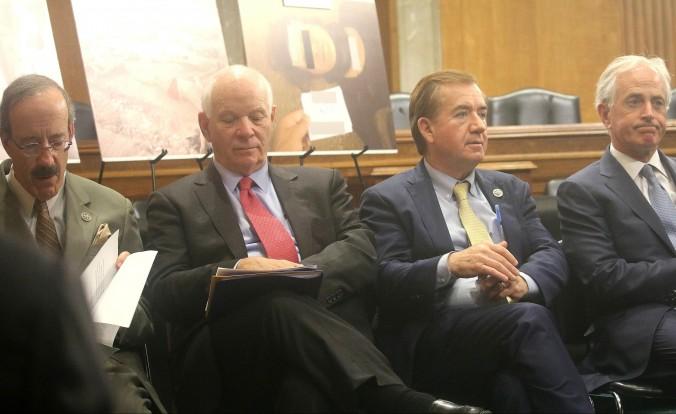WASHINGTON—The war in Syria is six years running with its heavy toll of death and suffering for the Syrian people. To make the world aware of the carnage, and incensed that the Bushar al-Assad regime commits crimes against humanity as the world looks on, the United States Holocaust Memorial Museum sponsored a commemorative event, “Inside Syria’s Torture Machine,” at the Dirksen Senate Office Building, March 21, on Capitol Hill, “to recognize the atrocities and crimes against humanity suffered by Syrian civilians.”
The museum was joined by the U.S. Senate Committee on Foreign Relations and U.S. House of Representatives Foreign Affairs Committee, in an expression of bipartisan and bicameral unity. The event included a display of a few photos taken by a former Syrian military police photographer that provide graphic evidence of the culpability of the Assad regime. He smuggled a total of 55,000 photographs out of Syria over a period of two and a half years. To protect his identity, the photographer is called “Caesar.”
The photos show the torture marks of prisoner bodies and other displays of the regime’s inhumanity. The few photos shown at this commemoration were first displayed at the Capitol two years ago.
“He risked his life to reveal the brutality the regime was inflicting on innocent men, women, and children,” said Cameron Hudson, director of the Holocaust Museum’s Simon-Skjodt Center for the Prevention of Genocide.
Almost three years ago, in July 2014 before the House Committee on Foreign Affairs, Caesar had testified, “I have seen horrendous pictures of bodies of people who had tremendous amounts of torture, deep wounds and burns and strangulation.”
‘War Crimes’
The speakers at the commemoration referred to the atrocities committed by the Assad regime. A good summary of these is contained in House Resolution 5732, introduced by Rep. Eliot Engel (D-N.Y.), which was passed in the House on Nov. 15 and referred to the Senate. It states that the Assad regime attacked vulnerable populations, “through the use of barrel bombs, chemical weapons, mass starvation campaigns, industrial-scale torture and execution of political dissidents, sniper attacks on pregnant women, and the deliberate targeting of medical facilities, schools, residential areas, and community gathering places, including markets.”




